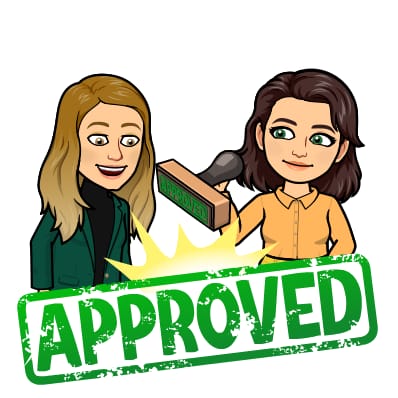Websites to support you during teletherapy and beyond
It is lockdown 3.0 in the UK...so we’ve had a lot of practice in trialing and using different websites in teletherapy, then in person, then in teletherapy again (cue sigh into the distance, while wondering when this will end).
We’ve collated all that we have come across (super big project) here, but here are the ones that have become a common part of our practice (no sponsorship or PR deals here, just links to places we have used often, found helpful and are...drumroll... FREE).
This should be read in conjunction with google chrome extensions for your browser for ultimate help-organise-engage-effect.
This is a site I use more in person than online. It measures the sound in a room and you can change the visuals from cute bubbles and emojis to eyeballs, you can change the sensitivity and you can add a SHHHH or noise alert if it gets too high.
I use this for noise levels in classes, or to illustrate different noise levels (if working on volume). This is free and you do not need to log in.
Simple image reveal tool, you can upload a picture underneath and toggle with the number of tiles needed to be removed. You can play a guessing game similar to Catchphrase (UK peeps will relate) or each correct answer/rep the client does means they can click on a tile.
This is free and you do not need a log in.
With this online whiteboard you can see all of your students' whiteboards in real time, so you can follow their progress! This is a great tool as the students only see your whiteboard and their own. This way, you can see how the group are getting on, and then work through the answers individually as required.
This is free with no need for a log in, but there are subscription options available that would include logins.
This is an innovative resource from Really Great Reading (highly recommend their CPD Courses as mentioned on twitter). This is the free version so it does not have all the features unless you pay. However I have found it a good supplementary activity for my pupils. You can use and move tiles to explore, build, segment, sound out, and spell words.
This is free and you do not need a log in.
Some of us will know this from our younger years… yes, that’s right, Newsround has found it’s way back to us. For those who don’t know, Newsround provides accessible, child-friendly news segments twice a day. You can replay previous episodes and sometimes they have videos on special topics too. No adverts, aimed at children and relevant to day-to-day life.
This is free to access, and you don’t need to log in.
There are weekly videos about scientific topics, most questions are sent in by the viewers and there are additional lesson plans for the videos sometimes too!
This is free, but you need to sign up.
Maybe it’s my age, but I love Arthur. This website has videos to watch (if you are in the US), and games you can play with the children as well as some Arthur themed arts and crafts activities.
This is free and no need for an account.
This is the newest addition. I am a keen advocate of this game. I love it so much I have begun to play this outside of sessions and with friends. In short, this is pictionary. Who doesn’t like pictionary? You have the option to set up a private room (perfect for teletherapy) and you even have the option to make a custom word list which is perfect for tier 2 vocabulary and literacy tasks.
This is free and you don’t need an account.
I used Readworks before the pandemic, but being remote has enabled me to embed this more for clients. This is integratable with Google Classroom, which makes it fairly dreamy for telehealth. Readworks provides high quality fiction and non-fiction passages alongside question sets, vocabulary instruction and other activities. It also has an online library that students can browse too. This is great for any language and literacy work either for targeting explicit goals or as a medium.
You and your students need to sign up, but it is completely free.
I found Edpuzzle during lockdown 1.0 and still continue to use it. WIth Edpuzzle you can take virtually any video from YouTube and edit it for your sessions: you can trim the clip and then embed question sets into the video to share with your students. You can also access videos that others have made too.
This is free, but with a limited number of videos on the free plan. You can refer friends to get more videos or upgrade to a paid plan.
Quill is another excellent resource for language and literacy students. This works on improving the written and grammatical skills of our clients. There is a baseline assessment (that you can repeat for follow up to track progress), you can perform live lessons as well as assign work.
This is free, but there is an option for premium (which only gives you a deeper insight into pupils' scores, not give you any extra activities etc.).
In summary, there are a lot of really brilliant resources out there! We’re really happy to share these with you and hope they help you to enhance your therapy sessions.
Just a note to say…
Working from home shouldn’t mean working above and beyond our usual therapy hours. We know that the sheer amount of resources out there can be really overwhelming. There are so many articles starting to appear about remote education and telehealth. We’ve tried to do the hard work for you by cherry picking some of the resources we’ve tried and tested in practice, and found to be effective. Happy therapying.
